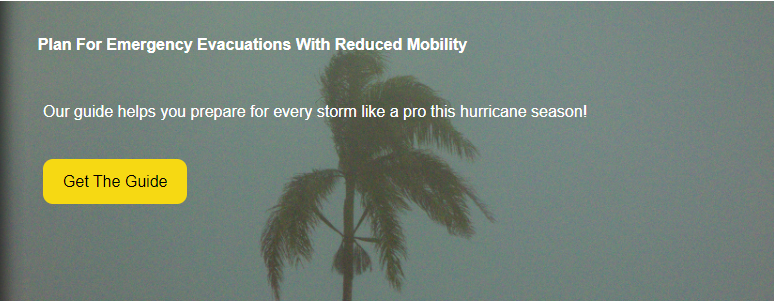Our golden years are an opportunity to forge new friendships, start new hobbies, and enjoy life without distraction. Many seniors make the decision to move from home and into a senior living community for wellbeing and independence. Not to mention having medical care and attentive staff on call, day and night.
Your senior living community could tick all of the above boxes, but is it evacuation-friendly in the event of a natural disaster or an emergency? As this crucial factor is often overlooked, we’ve compiled a helpful list of safety points for senior evacuation in disaster management:
Are staff trained for emergency evacuation?
They could be the most caring and attentive people in the world, but if a senior living community’s staff is not prepared for disaster, that all goes out the window! Here are a few considerations:
- Have staff been trained for emergency situations, including the evacuation of those with mobility impairment?
- How often (if ever) are evacuation drills practiced with staff and residents?
- Does emergency training extend to the skeleton crew working throughout the night? For example: if a hurricane strikes at the stroke of twelve, is the smaller staff equipped to handle disaster effectively?
Are all records up to date?
From the current list of residents and their rooms or addresses, to each tenant’s medical requirements and emergency needs, a senior living community needs to continually update its records to ensure it’s ready for emergency. This extends to family, authority, and emergency contact details, so that a channel of communication already exists should the unforeseen occur.
Is your current infrastructure and technology reliable and up to date?
An institution is only as functional as its infrastructure. So when an emergency strikes, would your current technology be a friend, or a foe? Decide early on if your emergency teams will be communicating via cell phones or walkie talkies. If it’s the latter, make sure they’re always charged, in an easy-to-reach place, and the respective people know exactly where to grab them.
If your community has an emergency backup power system or generator, determine how long you’ll have on the grid in the event of disaster, and make sure to upgrade or update the system routinely. If the doors and emergency exits are controlled by an electrical system, it’s important you test accessibility without power to ensure residents aren’t locked in due to a malfunction or power outage.
Here are a few questions to ask yourself when it comes to the more practical aspects:
- Are extra supplies of medication kept on site, should residents need them?
- Many residents will be using oxygen aids — is there enough oxygen stored for emergencies?
- Are residents supplied with first-aid/storm kits, and are they in an easily accessible place?
Do those with mobility impairment have an obstacle-free evacuation plan?
Seniors with varying levels of mobility impairment need to have their emergency mobility aids and helpers within easy reach and on speed dial. Caregivers should know what the evacuation procedure is, which residents they are to attend to, and what mobility implement is necessary to get them to safety. This goes double for communities that have more than one floor, as descending a staircase is tough for many seniors.
This is where Mobile Stairlift comes in. Our easy-to-deploy stair chair is the latest in ambulation mobility. Its lightweight, portable, and battery-powered functionality assists a safe descent should disaster strike your senior living community. Find out why it’s the safest, simplest, and most cost-effective means of senior evacuation in disaster management by reading our brochure.
or more information about Mobile Stairlift, click here. And should you have any further questions, please contact us.



